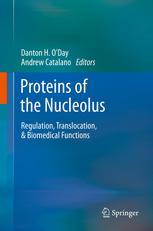

Most ebook files are in PDF format, so you can easily read them using various software such as Foxit Reader or directly on the Google Chrome browser.
Some ebook files are released by publishers in other formats such as .awz, .mobi, .epub, .fb2, etc. You may need to install specific software to read these formats on mobile/PC, such as Calibre.
Please read the tutorial at this link: https://ebookbell.com/faq
We offer FREE conversion to the popular formats you request; however, this may take some time. Therefore, right after payment, please email us, and we will try to provide the service as quickly as possible.
For some exceptional file formats or broken links (if any), please refrain from opening any disputes. Instead, email us first, and we will try to assist within a maximum of 6 hours.
EbookBell Team

4.3
18 reviewsThis book contains 14 original review chapters each yielding new, exciting and intriguing data about the emerging understanding of nucleolar structure and function in normal, stressed and diseased cells. The goal of this work is to provide special insight into the nucleolus of the past, present and future, as well its regulation, translocation, and biomedical function. A multitude of topics are introduced and discussed in detail, including nucleologenesis, nucleolar architecture, nucleolar targeting, retention, anchoring, translocation, and the relationship between the nucleolus and cancer. This book also brings together work from several different species, from human to Drosophila to Dictyostelium and other eukaryotic microbes. The final chapter summarizes some of the issues brought up in the various chapters with a view to future research. This book supports the continued emergence of the nucleolus as a dynamic intranuclear region that oversees a vast diversity of events.